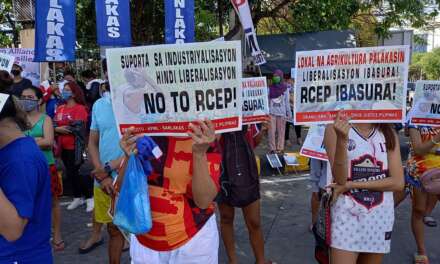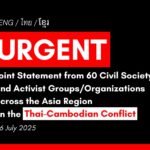By Ehito Kimura
This week, eighteen heads of state (or near heads of state) from the Asia Pacific will gather amid much pomp and circumstance to discuss the exciting topic of regional economic cooperation.
Asia Pacific Economic Cooperation, or APEC, an eclectic grouping of “economies” (to avoid controversy over Taiwan and Hong Kongs membership) includes Australia, Brunei, Canada, Chile, China, Hong Kong, Indonesia, Japan, Malaysia, Mexico, New Zealand, Papua New Guinea, the Philippines, Singapore, South Korea, Taiwan (officially Chinese Taipei), Thailand, and the United States.
Together, their economies account for nearly 50% of the worlds merchandise trade, half the global GNP and two fifths the population. This makes the upcoming meeting, arguably the largest and most important trans-pacific photo opportunity of its kind.
The diversity in APEC members political economies is noteworthy, if not curious. Representatives from the Americas laissez faire system, Chinas market socialism, and East and Southeast Asias “network” capitalism, will all sit together at the same table.
While APEC members have declared a commitment to eliminate all barriers to trade and investment by 2020 (2010 for industrialised countries), this has excited few people. For some, the idea is unappealing, for others boring.
To wit, there is clear disagreement even within APEC on implementation of its own declarations. While countries have supposedly submitted “action plans” most are simplistic and vague.
Some countries, principally Malaysia and Japan insist that liberalisation be non-binding and directly oppose U.S. efforts to make all economic sectors, including agriculture, open to foreign trade, competition, and investment.
The division within APEC is between those countries that envision a legalistic Asia Pacific Free Trade Area (APFTA perhaps?) and those that would prefer APEC to remain a consultative, non binding body, like the Organisation of Economic Cooperation and Development (OECD), which facilitates technical cooperation on economic matter.
On one extreme, we see the United States struggling for a foothold to gain market share in a potentially lucrative region. At the other end, Malaysia still fancies an East Asian Economic Caucus (downgraded from an Economic Grouping), which would form a bloc of Asian economies exclusive of Australia, New Zealand and the Americas. This explains why a miffed Prime Minister Mahathir boycotted the first APEC Leaders Meeting hosted by President Bill Clinton in Seattle four years ago.
The “WTO-plus” agenda advocated by free traders has little support in Asia. The financial meltdown in Thailand caused by the flight of foreign capital reinforces the suspicion that Western demands for increased liberalisation of trade and capital flows are against the self interests of Asia Pacific countries. Note that the two countries in the region with strong controls on financial and trade flows, China and India, have emerged from the crisis unscathed.
In this context, APEC is struggling for relevancy. Leaders are finding it increasingly difficult to rationalise a large meeting where they issue bland declarations and pose for a group photos wearing the cultural fabric of the hosting nation.
The World Trade Organisation is liberalising at a much faster pace and with more legalism. Asia also has competing structures like the ASEAN Free Trade Area (AFTA) and BIMP-EAGA (Brunei, Indonesia, Malaysia, Philippines, East Asian Growth Area).
Thus, the argument goes, APEC needs to find some niche lest it fade to relative obscurity.
While some see the APEC agenda as boring, others see it as unappealing in a different way. Critics argue that the non-binding consultative nature is good because it will keep APEC innocuous. They see a binding legalistic APEC structure as more dangerous for several reasons.
First, APEC, along with NAFTA and the WTO represents an unsustainable model of economic development based on neo-classical notions of unregulated free trade. This disregard the reality of political economy, that governance and economics are inseparable and economic theory must be adapted accordingly.
Second, APEC represents the supremacy of trade policy at the expense of environmental, labour, and human rights issues. It ignores such issues, even if they are a direct result of trade liberalisation, such as the vulnerability of workers today in the context of highly mobile capital.
Third, APEC is opaque and undemocratic. Available information on APEC is general and cosmetic, while more technical or relevant data remains inaccessible. APEC policy makers have created an APEC Business Advisory Council (ABAC) while non-business groups have been marginalised from any formal participation.
This third reason, compounded with the first two, is why the annual APEC Leaders Meeting has also seen parallel meetings among non-governmental organisations and citizen groups. Such gatherings are seen as a way to voice objections to APEC both at an advocacy level as well as through international media attention.
Last November, thousands of people representing hundreds of organisations from dozens of countries gathered in Manila in an inspirational act of trans-pacific solidarity. Groups lobbied their countrys respective APEC delegations to push them to recognise environmental and human costs to trade, in addition to raising the issues of economic sustainability. Protesters demonstrated in the streets, marched to the official meeting venue and delivered a joint letter to APEC officials noting objections to the institution.
Canadian non-government hosts, not to be outdone, have organised nearly a dozen meetings to parallel the official meetings, focussing on issues ranging from environment, labor, and development, to human rights, media, and the arms trade. In 1994 during APECs Bogor Summit, Indonesian government and military officials forcefully shut down a similar gathering. While the Canadian government remains unlikely to follow such harsh measures, they are no doubt nervous about how their distinguished guests might feel about the democratic freedom of expression.
It is unlikely that this next APEC Leaders Meeting in Vancouver will produce any significant outcomes. While some officials will likely be yawning out of boredom, citizens outside will be adamant about participatory mechanisms in APEC, as well as substantive change in its agenda.
There is talk that officials will discuss the liberalisation of commerce over the internet, the same way the APEC telecommunications declaration paved the way for a formal WTO agreement last year. But this seems unlikely given the recent climate of Southeast Asia. What seems more likely is a media intensive discussion about a potential “APEC fund” that could be set aside in case for member countries in case they get caught napping again.
If APEC is looking less relevant to policy makers, and dangerous to citizens, it seems only logical its focus should be shifted. After all, there is benefit in having such high level representation of countries like China, Indonesia, the United States, Japan, and Chile, among others, sitting together at the same table.
It seems a shame that the most memorable annual event at APEC is the photograph of the attending leaders lined up in one row, eighteen across, clad in a culturally appropriate garment, all grinning ruefully like school boys who dont know why they are smiling.
Surely important issues like the narcotics trade, the arms trade, the issue of migrant workers, are all well within the context of economic cooperation. And surely, it is only responsible to discuss trade and investment in the perspective of those who lose, as well as those who gain.
A flip side to the much touted age of globalisation, the widening gap between the rich and the poor must be addressed. On this point even Mohammed Mahathir and George Soros would agree. President of the World Bank James Wolfenson calls this the “challenge of inclusion.” Others call it dark side of capitalism.
If we accept that trade and investment does not take place in a vacuum, neither then should discussions about them disregard social and political ramifications.
As APEC treads water for the time being, policy makers should consider the opportunities. The diversity and informality at the APEC Leaders Meeting can be taken as a strength, not a weakness. But we must exercise our imagination and our commitment, not only for economic growth, but genuine regional development. If APEC could serve to promote such goals, perhaps people wouldnt be so bored, or so scared. And perhaps our memories of APEC would be of more than single photograph.



![[IN PHOTOS] In Defense of Human Rights and Dignity Movement (iDEFEND) Mobilization on the fourth State of the Nation Address (SONA) of Ferdinand Marcos, Jr.](https://focusweb.org/wp-content/uploads/2025/07/1-150x150.jpg)



